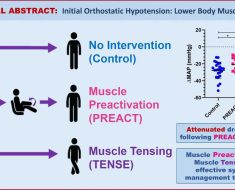Blood transfusion can be lifesaving, but it is not widely known that up to 40-50 percent of blood transfusions in the U.S. are unnecessary, according to the Joint Commission Journal on Quality and Patient Safety 2017. When used inappropriately, they can harm patients, generate excessive costs, and waste an important, limited resource.
THE PROBLEM
University of Missouri Health Care saw an opportunity to improve patient safety and reduce costs by implementing a red blood cell transfusion clinical decision support alert.
“Blood transfusions are among the most commonly over-utilized medical procedures in the U.S.,” explained Dr. Emily Coberly, medical director of transfusion services at University of Missouri Health Care. “Over-transfusion is associated with increased lengths of stay, morbidity and mortality, and unnecessary increases in healthcare costs.”
Additionally, since the U.S. blood supply comes entirely from volunteer donors, caregivers have a duty to protect this important limited resource by using it wisely and using only for the patients who absolutely need it, she added.
“We recognized that we had an opportunity to improve patient outcomes and reduce healthcare costs by implementing a system-wide strategy to prevent unnecessary transfusions,” she explained.
PROPOSAL
University of Missouri Health Care implemented a clinical decision support alert in its Cerner electronic health record, which fires every time a physician orders a red blood cell transfusion if the most recent hemoglobin level is above 7 g/dL or no recent hemoglobin level is available.
The alert does not fire if the transfusion is clearly indicated (most recent hemoglobin level less than 7 g/dL), for neonatal ICU patients, or for transfusions that occur in the operating room or during an emergency.
“When the alert fires, it shows the ordering provider the patient’s most recent hemoglobin level and vital signs, and also provides a direct link to the ‘Choosing Wisely’ transfusion guidelines and our hospital transfusion policy,” Coberly explained.
“When the alert fires, it shows the ordering provider the patient’s most recent hemoglobin level and vital signs, and also provides a direct link to the ‘Choosing Wisely’ transfusion guidelines and our hospital transfusion policy.”
Dr. Emily Coberly, University of Missouri Health Care
“At that point, the provider can choose to either cancel the transfusion order or they may override the alert and continue with the transfusion if they enter a reason as to why the transfusion is still indicated – patient is bleeding, has symptomatic anemia, etc.”
The healthcare organization believed that by presenting the caregiver with evidence-based guidelines and the most current patient-specific information at the time they were considering a blood transfusion, it would be able to support best practice and prevent unnecessary transfusions.
MARKETPLACE
There are many EHR vendors on the market today. They include Allscripts, athenahealth, drchrono, eClinicalWorks, eMDs, Epic, Greenway Health, Meditech and Medsphere Systems.
MEETING THE CHALLENGE
A team of associates from University of Missouri Health Care and the Tiger Institute for Health Innovation (a partnership between Cerner and the University of Missouri) worked together to design the alert, which was implemented in December 2017.
“We work with Cerner and access our electronic health record through PowerChart,” Coberly said. “The alert presents to the ordering provider while they are in the PowerOrders section of the EHR at the time they attempt to order a red blood cell transfusion.”
RESULTS
Staff are following the red blood cell transfusion rate, which is the total number of inpatient RBC transfusions/total number of inpatient discharges. The initial goal was to reduce the mean RBC transfusion rate by 20 percent.
“We initially saw a 12.3 percent reduction in mean RBC transfusion rate after implementing the RBC clinical decision support alert,” she said. “In November 2018, we added a similar style clinical decision support alert for plasma transfusion, and as of February 2019 the mean RBC transfusion rate is now 22.4 percent below our original baseline rate.”
Implementing alerts for other blood products has reinforced restrictive transfusion ordering practices for RBCs by providers, she added.
Further, between December 2017 and February 2019, the healthcare organization has transfused an estimated 1,563 fewer RBC units than expected based on its previous transfusion rate. This translates to a direct cost savings of $321,978, Coberly said.
“Indirect cost savings – including patient testing, transfusion administration costs and overhead – are estimated to be between $1.03 million to $1.55 million,” she added.
ADVICE FOR OTHERS
“Implementing clinical decision support alerts for blood ordering was a big win for our patients and our health system,” she said. “We saw a significant reduction in our RBC transfusion rate after the alert was implemented, as well as cost savings.”
Additionally, implementation of a clinical decision support alert for other blood products such as plasma further reinforced restrictive transfusion ordering for red blood cells, she added. Overall, this has been a very effective way to reduce unnecessary transfusions and excess costs, she said.
“Prior to implementing the alert, the only provider education we provided was a single e-mail to all users notifying them of the date that the alert would be implemented,” she explained. “After the alert was implemented, service lines with high rates of alert override were provided with targeted education regarding patient blood management and the reasons we implemented the alert.”
This targeted education, she added, resulted in reductions in alert override rates of up to 30 percent.
Twitter: @SiwickiHealthIT
Email the writer: [email protected]
Source: Read Full Article






